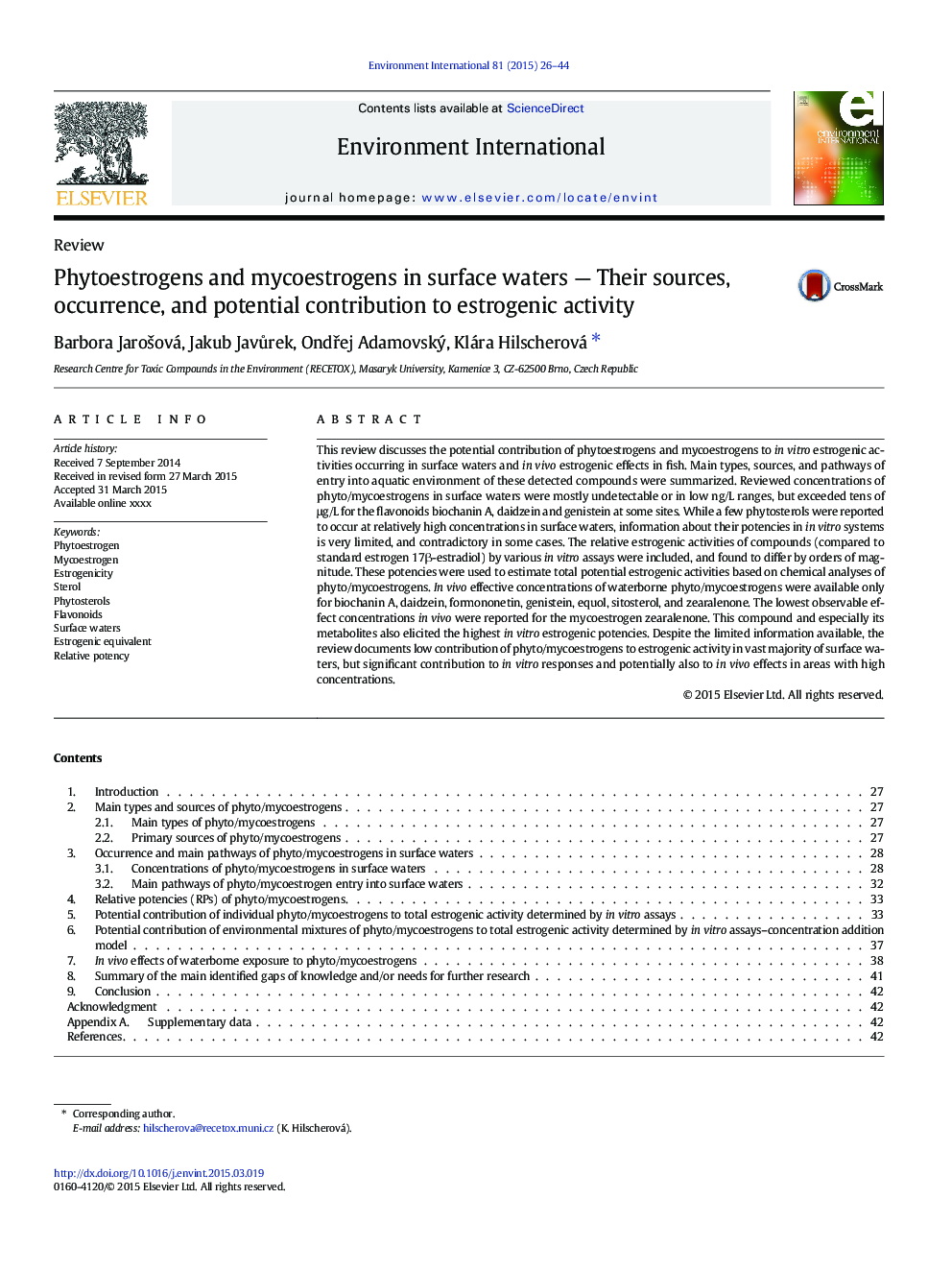| Article ID | Journal | Published Year | Pages | File Type |
|---|---|---|---|---|
| 6313288 | Environment International | 2015 | 19 Pages |
Abstract
This review discusses the potential contribution of phytoestrogens and mycoestrogens to in vitro estrogenic activities occurring in surface waters and in vivo estrogenic effects in fish. Main types, sources, and pathways of entry into aquatic environment of these detected compounds were summarized. Reviewed concentrations of phyto/mycoestrogens in surface waters were mostly undetectable or in low ng/L ranges, but exceeded tens of μg/L for the flavonoids biochanin A, daidzein and genistein at some sites. While a few phytosterols were reported to occur at relatively high concentrations in surface waters, information about their potencies in in vitro systems is very limited, and contradictory in some cases. The relative estrogenic activities of compounds (compared to standard estrogen 17β-estradiol) by various in vitro assays were included, and found to differ by orders of magnitude. These potencies were used to estimate total potential estrogenic activities based on chemical analyses of phyto/mycoestrogens. In vivo effective concentrations of waterborne phyto/mycoestrogens were available only for biochanin A, daidzein, formononetin, genistein, equol, sitosterol, and zearalenone. The lowest observable effect concentrations in vivo were reported for the mycoestrogen zearalenone. This compound and especially its metabolites also elicited the highest in vitro estrogenic potencies. Despite the limited information available, the review documents low contribution of phyto/mycoestrogens to estrogenic activity in vast majority of surface waters, but significant contribution to in vitro responses and potentially also to in vivo effects in areas with high concentrations.
Related Topics
Life Sciences
Environmental Science
Environmental Chemistry
Authors
Barbora JaroÅ¡ová, Jakub Javůrek, OndÅej Adamovský, Klára Hilscherová,
